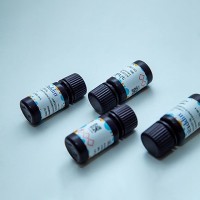Serology and Urea Breath Test in the Diagnosis of H. pylori Infection
互联网
753
The selectivity of Helicobacter pylori for the antral mucosa of the stomach and gastric metaplasia in the duodenum combined with the inaccessibility of those sites has hindered the investigation of this infection. Consequently, the study of the epidemiology and treatment of H. pylori has relied heavily on indirect methods of detecting infection. Therefore, the accuracy of findings from such studies, particularly those with small populations, was highly dependent on the sensitivity and specificity of the detection systems employed. The calculation of sensitivity, specificity, and positive and negative values of a test requires a “gold standard.”. The choice of gold standard, against which to validate the test, is important as it will have its own margins of error. Ideally, the gold standard and its margins of error should be identified when quoting sensitivity and specificity rates in validation of any new diagnostic test. For example, if a test has a sensitivity of 95% against a gold standard that has a true sensitivity of 85%, then the true sensitivity of the first test for its target would be 0.95 � 0.85 = 0.8, i.e., 80 and not 95%. In the case of H. pylori , the most commonly used gold standard in early work on indirect diagnostic methods was culture and/or histology. These two methods possibly have relatively the lowest sensitivity of any test for the presence of H. pylori . This is owing to the potential sampling error in removing biopsy material from an uninfected site. This, combined with variable culture efficiency and identification in histological sections, will lead to false negatives (1 ). This would be a particular problem in patients with any changes to the gastric mucosal epithelium from typical antral epithelium, such as intestinal metaplasia, because the changes would remove the niche availability to H. pylori and reduce the infective load.The problems can be minimized, for example, by staining histological sections with the modified Giemsa stain, making the recognition of H. pylori easier, even when the organism is present in small numbers. The combination of culture and histology is preferable to using either of the two independently, and certainly preferable to using endoscopic appearance alone, to estimate the sensitivity and specificity of a test. Many workers only count a case as H. pylori positive when two out of three indirect tests are positive.




![N-(3-Chlorophenyl)-N'-[5-[2-(thieno[3,2-d]pyrimidin-4-ylamino)ethyl]-2-thiazolyl]urea](https://img1.dxycdn.com/p/s14/2025/1010/765/0865776312945446791.jpg!wh200)




